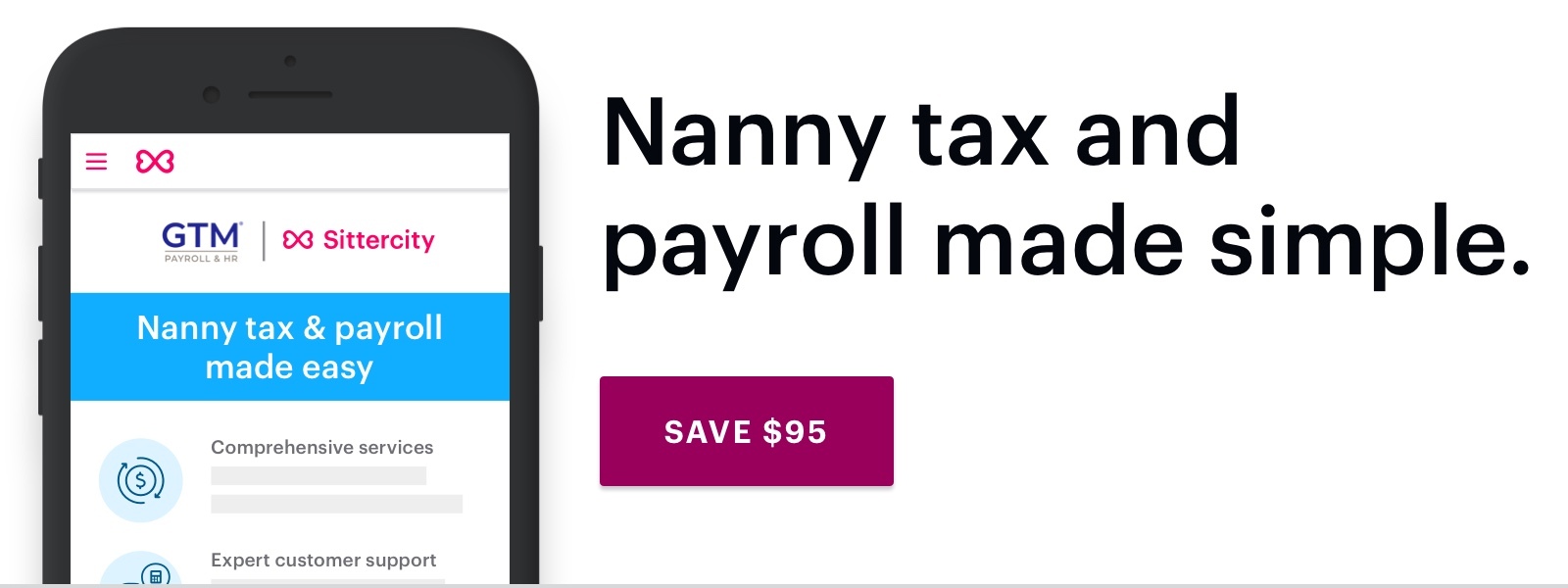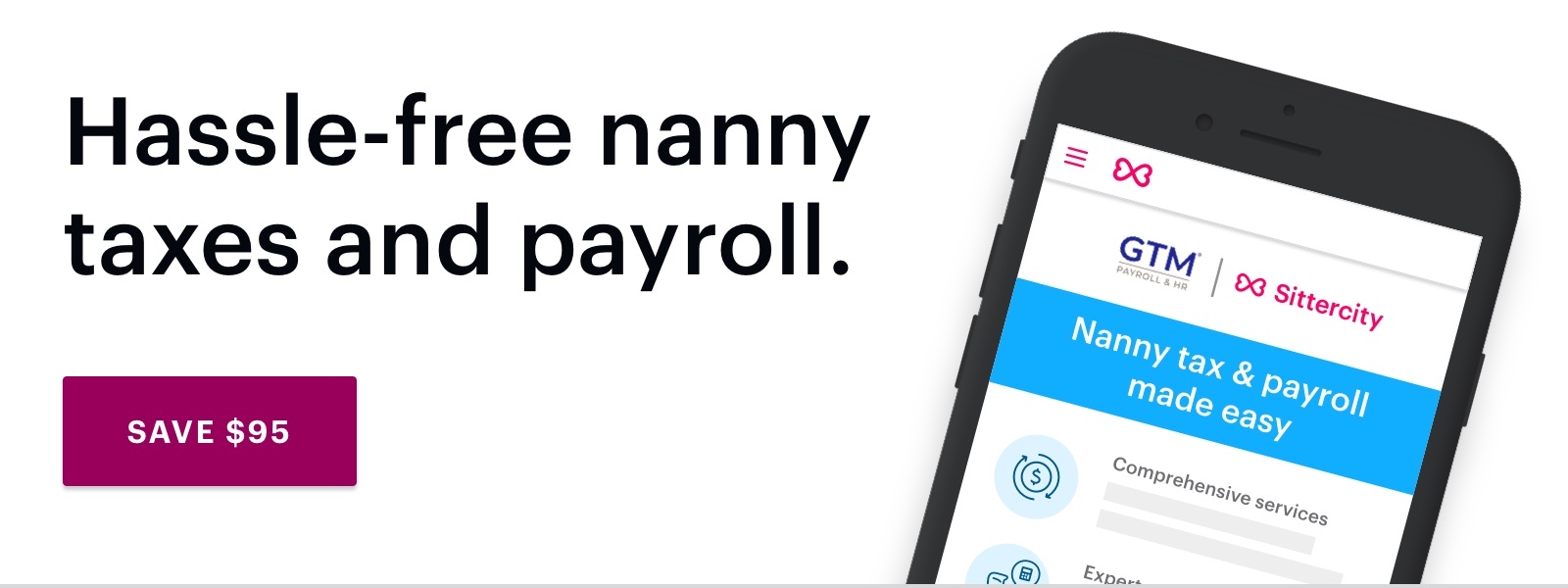We understand that figuring out the right way to pay your nanny or babysitter can already feel overwhelming and complicated. When you add a global pandemic into the mix, making the right decisions for your family and your caregiver can be paralyzing. Our friends at GTM Payroll Services are here to help. They’ve got the details on how to manage being a household employer and the new benefits you might have access to.
Should I Keep Paying My Nanny or Babysitter?
With the COVID-19 pandemic, social distancing, and business shutdowns, families with someone working in their home may have questions you haven’t previously considered about paying your caregiver.
First things first: make sure you’re following what’s been agreed to in the contract or work agreement for paid sick leave and/or guaranteed hours. It’s a good idea to discuss the situation with your nanny and listen to their questions and concerns to make sure that you’re both on the same page.
If you don’t have a contract that includes sick leave, you’re now faced with an ethical dilemma. If you’re still being paid by your employer during the coronavirus pandemic, consider still paying your nanny, whether they’re able to work for you or not. To cut off their pay—at a time when perhaps they need it the most—could jeopardize the relationship you have with your caregiver. They may decide to look for employment elsewhere and you’ll be stuck trying to find a new nanny once your quarantine is over.
Should I Fire My Nanny So They Can Collect Unemployment?
Whether your nanny is sick or in good health, unemployment benefits only provide partial income replacement, and only applies if you have already been paying your employee legally.
While continuing to pay your employee as usual may be a better alternative to unemployment, there may come a time when you can’t afford to pay your worker. Terminating them and having them collect unemployment could become an option.
Here is some advice on how to file for benefits.
Those who lose work because of the virus may also qualify for Disaster Unemployment Assistance.
How Can My Nanny Claim Unemployment If I Haven’t Been Paying Them Legally?
If you haven’t been paying your nanny legally, it isn’t too late to get them qualified for unemployment and other benefits. You can pay your required back taxes and start paying legally moving forward. GTM Payroll Services can help you with this.
What If My Nanny Develops Coronavirus Symptoms or May Have Had Contact With Someone Who Does?
If your nanny has coronavirus symptoms or has contracted the disease, they need to stay home. This will help stop the spread of the virus and keep your family safe. There are ways your employee can still receive pay while not working:
- Review your work agreement for paid time off and sick days. Your employee can use that paid time while they can’t work.
- The recently passed Families First Coronavirus Response Act (FFCRA) also provides paid time off for employees who can’t work due to the coronavirus.
- Your employee may be eligible for disability insurance (applies to workers in California, Hawaii, New Jersey, New York, and Rhode Island).
- Your city or state may also have a paid sick leave law that could provide benefits to your employee.
What New Tax Credits Are Available To Household Employers?
To help cover the costs of mandated leave, FFCRA provides employers two refundable payroll tax credits that are designed to immediately and fully reimburse them. Employers will be repaid, dollar-for-dollar, for the cost of providing coronavirus leave to their employees.
Please note that you need to be paying your employee legally in order for them to take advantage of paid leave and for you to receive tax credits.
Paid Sick Time Payroll Tax Credit
- Claimed on a quarterly basis.
- Equal to 100 percent of the amount of sick leave wages paid to your employee.
→ If they’re taking leave to care for themselves: limit of $511/day (or $5,110 total over the 10 days).
→ If they’re taking leave to care for an individual quarantined or showing coronavirus symptoms or a child whose school is closed: limit of $200/day ($2,000 total).
Paid Family Leave
If you pay your employee for paid family leave, a separate payroll tax provision provides a 100 percent credit against your share of the payroll tax for your employee. This credit is limited to $200/day ($10,000 total).
How Can I Claim These Tax Credits?
Employers who pay qualifying sick or child care leave will be able to retain an amount of the payroll taxes equal to the amount of qualifying sick and child care leave that they paid, rather than deposit them with the IRS.
The payroll taxes that are available for retention include withheld federal income taxes, the employee share of Social Security and Medicare taxes, and the employer share of Social Security and Medicare taxes.
If those amounts are not enough to cover the cost of paid leave, you can seek an expedited advance from the IRS by submitting a streamlined claim form that will be released later this week. The IRS expects to process these requests in two weeks or less.
Eligible employers will be able to claim these credits based on qualifying leave they provide between the April 1 (the effective date of FFCRA) and December 31, 2020.
Employers are also entitled to an additional tax credit based on costs to maintain health insurance coverage for the eligible employee during the leave period.
Do I Have to Pay Taxes During This Time?
If you are still paying your employee, you will continue to pay the usual taxes that are due each pay period.



